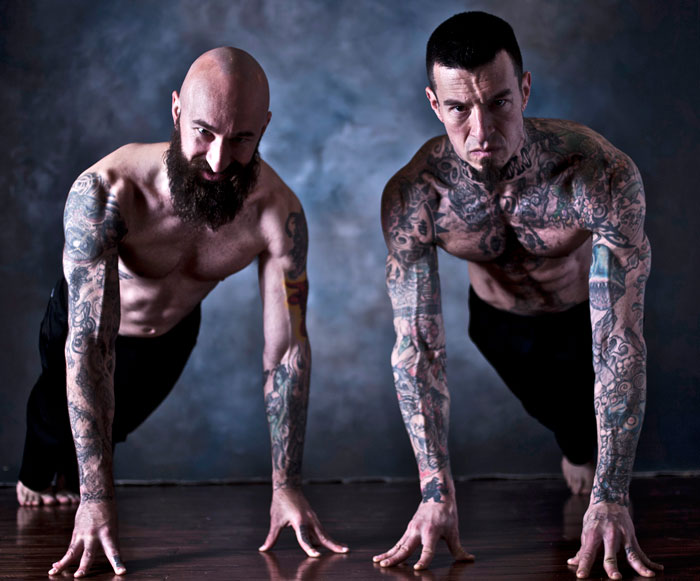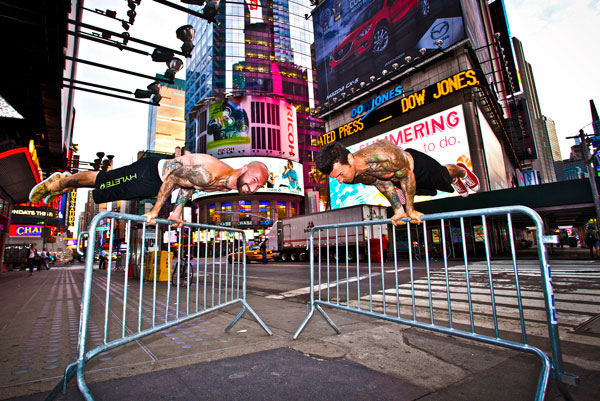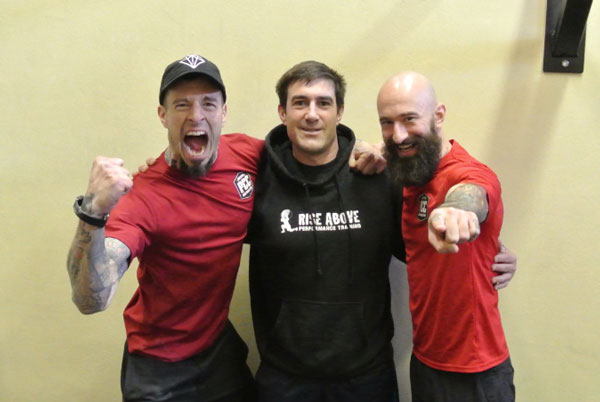
In our ever-growing, fast-paced world, the need for instantaneous information extends through many areas in our lives – especially fitness. Topics like: The 5 Best Exercises You’re NOT Doing and Three Secret Hacks to Gain Strength Instantly promise quick results with minimal effort. Much of the fitness industry has gone the way of the late night As Seen on TV infomercial where we bounce from different training ideas, exercises and equipment only to have them all collect dust in either the corner of the room or the corner of our minds.
I do not blame the trainer for getting sucked into this slick style of marketing, nor do I blame companies for using these marketing tactics to gain a wider audience and increase their bottom line. In this day and age we are responsible for ourselves and it would probably serve us best if we took a few deep breaths before we dive into the latest trend.
I have been a proud RKC instructor since 2008 and have been happy with Dragon Door’s products and courses; I’ve also admired their marketing strategies. Like it or not, marketing is essential to grow a brand or business and it usually requires something memorable or out of the ordinary to make a person take action. Seeing the Kavadlo brothers performing feats of strength with only their bodyweight is truly inspiring and sends that immediate shockwave of determination through the body: I want to do that.

Still, I didn’t want to jump right into the PCC certification for fear that it was Dragon Door’s way of staying relevant in the ever changing landscape of fitness and it would not be as good an experience as advertised. After taking a step back and doing more research I decided to sign up and I am glad that I did. All throughout the years Dragon Door has remained true to their roots and backed up their marketing by providing a learning experience of the highest quality.
First off, they bring out the best instructor team. Al and Danny are the best not only because they can wow any mortal human being with their movement prowess; they can also actually teach the movements they are performing in a safe and progressive manner.
Like every other Dragon Door course I have attended, Al, Danny, Adrienne and the rest of the team were focused on the curriculum and were direct with their approach. Their primary objective was to not only teach the movements in easily digested portions, they also wanted to teach us how to instruct our clients through the progressions.
The other thing Dragon Door has done remarkably well with the PCC is to make the course all-inclusive for every age and fitness level. People might have one of two types of reservations when considering the PCC: Either it is going to be too difficult or it is going to be too easy. I was in the former class, having only trained bodyweight basics like squats, pull-ups and push-ups; I had never challenged myself with advanced progressions and variations.
Balancing the course to make it appropriate for everyone in attendance seemed like an impossible task, but the instructors handled it beautifully. I can say this is truly a certification that includes everyone. The participants at the PCC I attended in Encinitas this January were a great mix of male and female fitness enthusiasts ranging in age from 18 to over 60, each bringing different training backgrounds and skill sets. For every core exercise presented the instructors had several remedial options as well as advanced options. Everyone was able to find variations to practice that were challenging, yet appropriate for their individual fitness level.

The PCC Century Test
In true Dragon Door fashion, you have to demonstrate proficiency in basic movements and pass the Century Test to earn the PCC credential.
I had a client ask me recently “why does there need to be a physical test to prove you are a good coach?” I thought about it for a moment and told the client that “testing is a way to truly devote yourself to a challenge and bring out a better version of yourself. You have to put some skin in the game!”
After signing up, I had to ensure I was successful at completing the test and passing the course. Here is the blueprint and workouts I used during my PCC century test preparation. I hope it serves you as well as it did me.
Do Your Homework
Before diving right into a program I wanted to first understand exactly what I was getting into. I found a great article on the Dragon Door website by Adrienne Harvey which helped address the exact exercises, repetitions, techniques, order and time allotment I needed for the test. I wrote all of these on top of my workout training page so I always had them in front of me. They are as follows:

I officially began my training six weeks out from the certification. After my research I decided to test myself to see where I was from the start. I went in fresh after my normal warm-up and went through The Century trying to be as strict as possible with form.
I was mostly happy with the results, however there was work to be done and this baseline test showed me exactly where I needed to center my attention. I could feel that my form became sloppy as each exercise wore on. In my previous training programs I had not been performing push-ups and pull-ups in the higher repetition ranges I needed to pass the PCC test, so this would be my primary focus.
Getting your Reps Up
I dedicated three of my five training days to the specific bodyweight exercises of the PCC. After practicing various combinations of calisthenics, I would rest and perform the PCC test at the end of my workout to see if I improved. I liked adding the test at the end of the workout because the PCC certification test is performed at the end of the three-day training course so fatigue will be a factor and being able to pass when you are tired is essential.
One workout I did I called The Century and a Half. Like the name implies, you do the entire Century at the end of your workout and after your pull ups, you start right back with the squats and perform all of the exercises for half the number of repetitions. I allotted myself a maximum of 12 minutes to complete the century and a half routine.
If you find your general conditioning lacking, it may cause a problem during the PCC test. For this, I added some sprints into the training mix. Trust me; you want to be in good cardiovascular shape for the Century. Your adrenaline will be pumping–and after your 40 squats so will your heart rate. If you cannot catch your breath the rest of the test could be a struggle and you don’t want to let your cardiovascular system be your undoing.
I have a local track that has pull-up and dip bars so it was a perfect place to combine calisthenics with cardiovascular training. For my favorite workout I would run 400m at a pace that was comfortable and then I would do as many pull-ups, hanging knee raises and push-ups as I could with good form. When I was done I would repeat three more times.
Not only was I training my cardiovascular system I was performing the calisthenics movements during a state of elevated heart rate and, especially after a few runs around the track, a state of fatigue.
If you live in an area affected by real winter weather or don’t have a track with pull-up bars, simply bring a jump rope to a location that does. Skip for 1-2 minutes and then perform your bodyweight exercises for however many rounds you see fit.
With meticulous thought towards every detail, Dragon Door has truly done it again with their PCC certification course. It is a testament to how they understand fitness and the people who seek knowledge to make themselves and their clients better. If you are willing to practice the basics, you should have no problem passing the PCC exam and enjoying the weekend. I know I sure did!

***
Doug Fioranelli, PCC, RKC-II, holds a Master’s degree in Kinesiology and is the owner of Rise Above Performance Training™ in Belmont, CA. Check out his blog for more training articles and videos at DougFioranelli.com